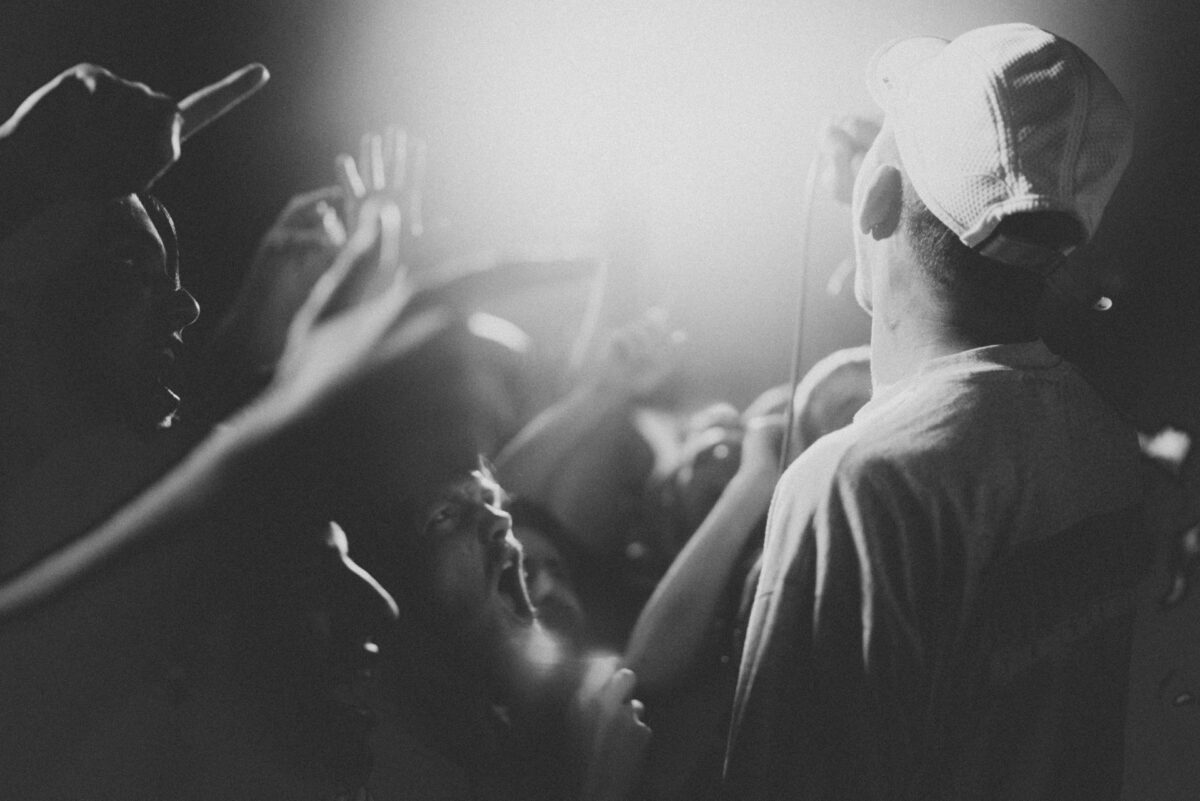It’s been a while since I’ve jumped into another genre that sounds made up.
A kaleidoscope of influences — hardcore, post-hardcore, metal, new wave, disco, etc. — consistently infused with cheeky irreverence and borderline-effeminate vocality, sasscore is a truly magnificent musical monstrosity that spits in the face of hypermasculinity. Hipsters before hipsters were uncool.
The Compendium of Sass
A “compendium of sass” posted to the now-defunct website “Stuff You Will Hate” described sasscore as “all about tight pants, pink, snotty attitudes, sweaty dance parties, keyboards, androgynous Asian band members and explicit homoeroticism.”
According to the compendium’s anonymous author, sasscore is, plainly put, “Hardcore for the angry skinny boys full of sexual tension and a great collection of skinny ties and thrift store slim-fit suit jackets before those were even a thing that cool people wore.”
Scathing commentary aside, sasscore seems to perfectly encapsulate a highly-specific and lamentably short-lived era of late 90’s and early 2000’s aesthesis.

Just as “twee” describes a brief-but-irrefutably punctuating period of Moldy Peaches-listening, Oxford-wearing, tote bag-carrying proto-hipsterism, sasscore highlights the intersection of “hipster-scenester” male sexuality, “femme arthouse stuff,” and alternative music long before “hipster” became a derogatory term.
And it was polarizing, for sure. People either loved sasscore or absolutely hated it (evidently enough to psychoanalyze its fans on troll websites).
Why Hate Sass?
The anonymous author speculated that one reason the genre was met with such fervent resistance was due to the “latent discomfort hardcore has always had with male sexuality, be it heterosexual or homosexual.”
While there are certainly some points in the author’s manifesto that strike me as conjecture rather than analysis, I do agree that sasscore seems to find its roots in its opposition to the hegemonic masculinity of the hardcore scene.

As we’ve seen with other genres like riot grrrl, queer/homocore and egg punk, the “boy’s club” atmosphere of the hardcore scene is, to put it plainly, highly divisive. While nonconformity is the alleged crux of punk ethos, the veneration of hypermasculinity overshadows the scene’s diversity.
In a way, sasscore is the antithesis of the hypermasculine. While still majorly male-dominated, sasscore artists never shy away from the “feminine,” dressing somewhere between punks, hipsters and scene kids and infusing their instrumentation and stylistics with audacious and experimental styles.
The Emergence of Sass
Sass rose as a movement in the early 2000s with the work of bands like The Crimson Curse, Orchid, The Blood Brothers, Black Eyes (one of my favorite sass bands) and The Plot to Blow Up the Eiffel Tower.

At the same time, other bands such as Destroyer Destroyer, Tower of Rome and many others excluded sasscore’s post-hardcore influences, instead fusing sasscore with mathcore and grindcore. The resulting genre became known as white belt.
Some newer white belt bands that mix hardcore, slam, grind and metalcore revival include SeeYouSpaceCowboy, The Callous Daoboys, and .gif from god (who I saw live last year)
The Sound of Sass
According to Phillip Stounn of DIY Conspiracy, sasscore incorporates elements from genres within and outside of punk and is generally considered a post-hardcore style.
Key stylistic features include an “over-the-top, spastic edge, dissonant, chaotic guitars, occastional dance rhythms, synths and blast beats.”
In 2017, writer Ellie Kovach (influenced by “the compendium of sass”) described the genre’s “lisping vocals shouting incredibly erotic lyrics over chaotic guitar runs and keyboards” and “flamboyant, homoerotic clothing and behavior” as being primarily directed at hardcore’s “tough-guy” culture and “the PC crowd’s stifling lack of ability to have fun.”
Final Thoughts
I’m always a sucker for a genre that counters counterculture, and I always jump at the opportunity to elicit some early-2000’s nostalgia.
While sasscore certainly isn’t for everybody, I find that it’s my particular flavor of so-weird-it’s-almost-bad music. Would I play Black Eyes for my family? Probably not. But have I listened through their self-titled album more times than I can count? Absolutely.
If you’re someone interested in music with a “spastic edge,” then perhaps you should check out sasscore. If you like things a bit on the heavier side, check out white belt.

